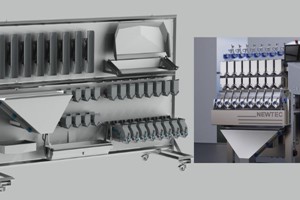In the grand scheme of technological advancements, the food industry has often been perceived as lagging behind sectors such as Telecom, Auto, Entertainment, Appliances, and Aerospace. However, recent years have witnessed a notable surge in innovative endeavors within the food sector, particularly revolving around sustainable practices and novel technologies aimed at reducing its carbon footprint.
One of the groundbreaking technologies that has garnered attention is cellular agriculture, which involves creating animal proteins by replicating cells. Despite being in its nascent stages with no products currently available, cellular agriculture holds promise for revolutionizing protein production. Similarly, the rise of plant-based meats, offering alternatives to animal proteins, has been notable, although market success remains a challenge.
Central to this recent wave of innovation is the imperative to address the food sector's significant contribution to greenhouse gas emissions, ranging from 14% to 50% of total emissions, depending on the source. In response to mounting pressure, fueled by concerns over intensive water use, habitat destruction, and carbon emissions, the industry has increasingly focused on mitigating its environmental impact.
A critical aspect of this endeavor is the reduction of food waste, a pervasive issue that squanders resources and exacerbates environmental degradation. Shockingly, more than one-third of all food produced is wasted, translating to a substantial squandering of carbon emissions and water consumption. Contrary to popular belief, the bulk of this wastage occurs not at the consumer level but rather in or near the fields where food is cultivated.
Challenges such as the inability to harvest crops at optimal ripeness and difficulties in storage contribute significantly to food waste. Additionally, consumer preferences often result in the discarding of valuable parts of produce, further exacerbating the problem. Addressing this issue demands innovative solutions that enable the utilization of more of the harvest while minimizing waste.
Enterprises like Branchout Food Inc. (BOF) are spearheading a technological renaissance in the ancient practice of food drying. By leveraging cutting-edge technologies that circumvent the detrimental effects of traditional drying methods, BOF is producing a range of plant-based chips, chews, and crisps without resorting to heating, freezing, or oxidizing. Moreover, companies like GTF Technologies are pioneering equipment that facilitates the conversion of by-products from conventional processing into high-quality dried ingredients.
These advancements not only offer a solution to food waste by enabling the consumption of more of what we grow but also present opportunities for enhanced production efficiency. By preserving flavor and nutritional value without resorting to traditional preservation methods, these technologies address the core challenge of delivering food to consumers' tables while minimizing spoilage.
While the spotlight often shines on headline-grabbing innovations, it is crucial to recognize the transformative potential of advancements in food drying technology. From pasta to coffee and beyond, dried ingredients are finding favor among consumers, offering convenience and versatility. Moreover, innovations in food drying hold the promise of smaller environmental footprints, reduced waste, and improved productivity, making them a tantalizing prospect for the food industry's future.
nasdaw.com - Arlin Wasserman














